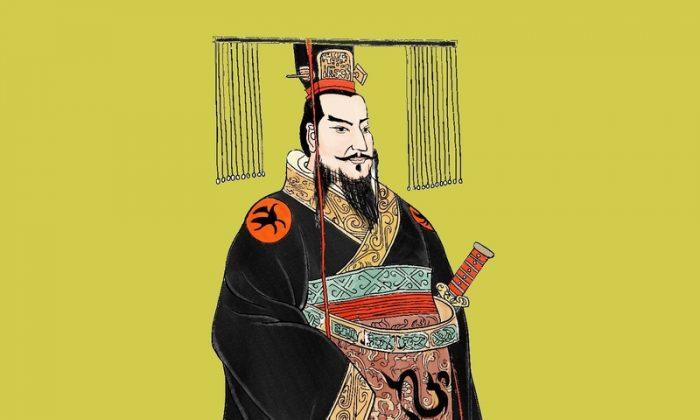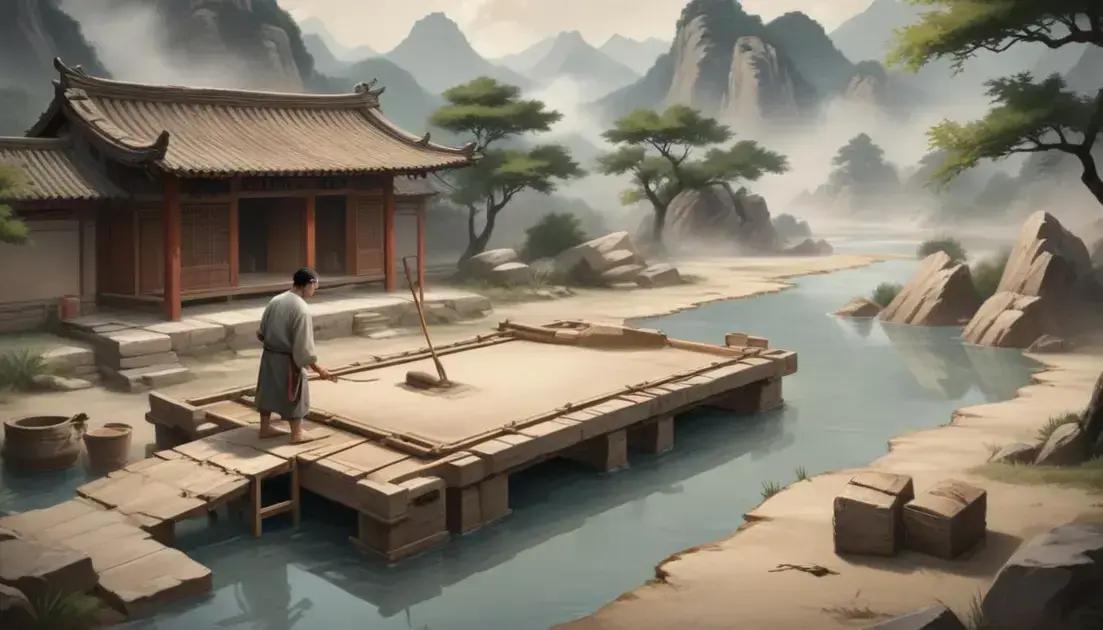
The Story of the First Emperor of China: Qin Shi Huang
Qin Shi Huang, the first emperor of a unified China, remains one of history’s most influential and controversial figures. His reign, from 221 to 210 BCE, marked a pivotal turning point, transforming a collection of warring states into a single, centralized empire that laid the foundation for Chinese civilization as we know it. However, his methods were often brutal, leaving a legacy tinged with both awe and condemnation. This exploration delves deep into his life, his achievements, his policies, and the enduring impact he continues to have on China and the world.
From Ying Zheng to Qin Shi Huang: The Rise of an Emperor
Born Ying Zheng in 259 BCE, the future emperor was the king of the Qin state, one of several powerful entities vying for dominance in ancient China. The period was characterized by relentless warfare, a chaotic landscape of shifting alliances and betrayals. Ying Zheng, however, possessed a rare combination of strategic brilliance and ruthless ambition. He inherited a strong military and a kingdom with a well-defined expansionist policy, but it was his own cunning and determination that propelled him to ultimate victory.
His early years were marked by political maneuvering and the consolidation of power within his own state. He ruthlessly eliminated rivals and opponents, demonstrating a willingness to employ both force and subterfuge to achieve his goals. This unwavering focus on power was a defining characteristic of his personality and his reign. He meticulously crafted a powerful army, implementing innovative military strategies and technologies, including the use of advanced weaponry and well-trained cavalry.
The conquest of other states began in earnest in 230 BCE. Ying Zheng meticulously orchestrated his campaigns, targeting weaker states first and leveraging his victories to gain a strategic advantage over his stronger opponents. His armies, disciplined and efficient, systematically overwhelmed the forces of the Han, Zhao, Wei, and Yan states, each conquest further bolstering his reputation and resources. The final and most significant challenge came in the form of Chu, the last major resisting state. After years of intense conflict, Chu fell in 221 BCE, marking the culmination of Ying Zheng’s ambitious project and the official birth of a unified China.
With the unification complete, Ying Zheng boldly declared himself Qin Shi Huang, the First Emperor, establishing a precedent for imperial rule that would shape Chinese governance for centuries to come. The title itself was a proclamation of his unprecedented authority and the dawn of a new era. His reign wouldn’t simply be the continuation of the Qin state; it would be the commencement of an entirely new imperial order.
The Legalist Framework: Centralized Control and Standardized Systems
Qin Shi Huang’s governance was profoundly shaped by Legalism, a philosophy that emphasized strict laws, harsh punishments, and centralized control. This approach, while effective in consolidating power and establishing order, came at a steep human cost. Legalism’s emphasis on efficiency and obedience provided a framework for his grand vision of a unified, controlled empire.
One of the most significant aspects of his reign was the implementation of standardized systems. Before unification, each state had its own unique currency, weights, measures, and writing system. This lack of uniformity hindered trade, communication, and overall national cohesion. Qin Shi Huang recognized this and initiated a comprehensive standardization program. A unified currency and weights and measures system facilitated trade and economic integration, creating a more unified and prosperous empire. The standardization of writing, though initially met with resistance, created a common linguistic foundation for future generations.
The establishment of a centralized bureaucracy was another crucial step in consolidating imperial power. Qin Shi Huang divided his vast empire into 36 provinces, each administered by appointed officials directly answerable to the emperor. This hierarchical structure ensured that the central government maintained absolute control over all aspects of governance. The officials were carefully selected, often based on merit, although loyalty and unwavering obedience were equally, if not more, important considerations.
This centralized system extended to the military, with the establishment of a powerful standing army directly under imperial control. The large-scale military campaigns required for unification underscored the need for a well-organized and efficient fighting force, loyal to the emperor and his policies. This military system allowed Qin Shi Huang to suppress dissent and maintain control effectively, although the immense resources required to support it placed a considerable burden on the populace.
Mega-Projects and Monumental Construction: Shaping the Landscape of China
Qin Shi Huang’s reign was defined not only by administrative and political reforms but also by an unprecedented level of large-scale construction projects. These projects, while impressive testaments to his ambition and engineering prowess, also highlight the immense human cost associated with his rule.
The Great Wall of China, a colossal undertaking that involved mobilizing vast numbers of laborers, stands as a potent symbol of his reign. While earlier versions of walls existed, it was under Qin Shi Huang that the project took on its truly monumental scale. The wall’s construction involved connecting and expanding existing fortifications, creating a formidable barrier aimed at protecting the empire from nomadic invaders. The massive undertaking necessitated the forced labor of hundreds of thousands, highlighting the brutal realities behind the achievement.
The construction of a vast network of roads and canals further facilitated communication and trade throughout the empire. These infrastructure projects were crucial for integrating the newly unified territories and promoting economic growth. However, these works too were built with immense human suffering, the labor force drawn from the population through conscription and forced servitude.
The Terracotta Army: An Army for the Afterlife
Perhaps the most enduring symbol of Qin Shi Huang’s reign is the Terracotta Army, an awe-inspiring collection of life-sized terracotta sculptures buried with him in his mausoleum. This breathtaking archaeological discovery reveals the sophistication of ancient Chinese craftsmanship and engineering skills, as well as the emperor’s profound obsession with immortality and power.
The army, consisting of thousands of soldiers, horses, and chariots, is arranged in military formations, each figure possessing unique features and expressions. The detail is astonishing, providing invaluable insights into the military organization and weaponry of the time. However, the sheer scale of the project, along with the countless lives spent in its creation, underscores the immense human cost of the emperor’s ambitions. The army was intended to serve the emperor in the afterlife, a reflection of his deep belief in his own importance and the continuation of his power beyond death.
Suppression and Control: The Dark Side of Unification
While Qin Shi Huang’s achievements are undeniable, his methods were frequently brutal and repressive. His reign was characterized by a ruthless suppression of dissent and opposition, often resulting in mass executions and the persecution of scholars and intellectuals who challenged his authority. The Legalist philosophy, with its emphasis on strict laws and severe punishments, facilitated this repressive environment.
The burning of books and the burial of scholars, a notorious episode in Chinese history, highlights his intolerance for opposing viewpoints and his determination to maintain absolute control. This act aimed to eliminate alternative perspectives and ensure the dominance of the official narrative, solidifying his power and suppressing any potential challenges to his rule.
The implementation of a rigid social hierarchy and strict social control further reinforced the oppressive nature of his regime. His policies limited social mobility and maintained a hierarchical system, suppressing individual freedoms and reinforcing the emperor’s supreme authority. This created a climate of fear and intimidation that stifled dissent and ensured compliance.
The Death of an Emperor and the Legacy of a Dynasty
Qin Shi Huang’s death in 210 BCE, reportedly from ingesting mercury in a quest for immortality, marked the end of an era. His relatively short reign, though impactful, was followed by the swift collapse of the Qin dynasty. The oppressive nature of his regime, the resentment fostered by his harsh policies, and the lack of a clear successor led to rebellion and the eventual triumph of the Han dynasty.
Despite the short-lived nature of the Qin dynasty, Qin Shi Huang’s impact was profound and enduring. His unification of China created a precedent for imperial rule that influenced subsequent dynasties, establishing the fundamental framework for Chinese governance for centuries to come. His standardized systems and infrastructure projects facilitated trade, communication, and economic growth, laying the foundation for a more integrated and prosperous China.
A Complex Legacy: Evaluating Qin Shi Huang’s Reign
Qin Shi Huang remains a complex and controversial figure. He was a visionary leader who unified China, creating a powerful empire and establishing systems that shaped Chinese civilization for millennia. Yet, his methods were often brutal and oppressive, resulting in immense human suffering. The sheer scale of his achievements, coupled with the ruthless methods employed to achieve them, leaves a legacy that continues to provoke debate and discussion.
His reign serves as a potent reminder of the intricate relationship between progress and oppression, between ambitious vision and the human cost of its realization. The enduring legacy of Qin Shi Huang is not simply a celebration of his accomplishments but also a critical examination of the choices he made and the implications of his actions. His story continues to resonate because it forces us to grapple with the complexities of power, leadership, and the pursuit of a unified vision. His story is not just a historical account; it is a timeless lesson in the complexities of leadership, the pitfalls of unchecked power, and the enduring impact of a single individual on the course of history. The ongoing study and analysis of Qin Shi Huang’s life and reign offer invaluable insights into the challenges and complexities of governance and the enduring pursuit of power and control.


